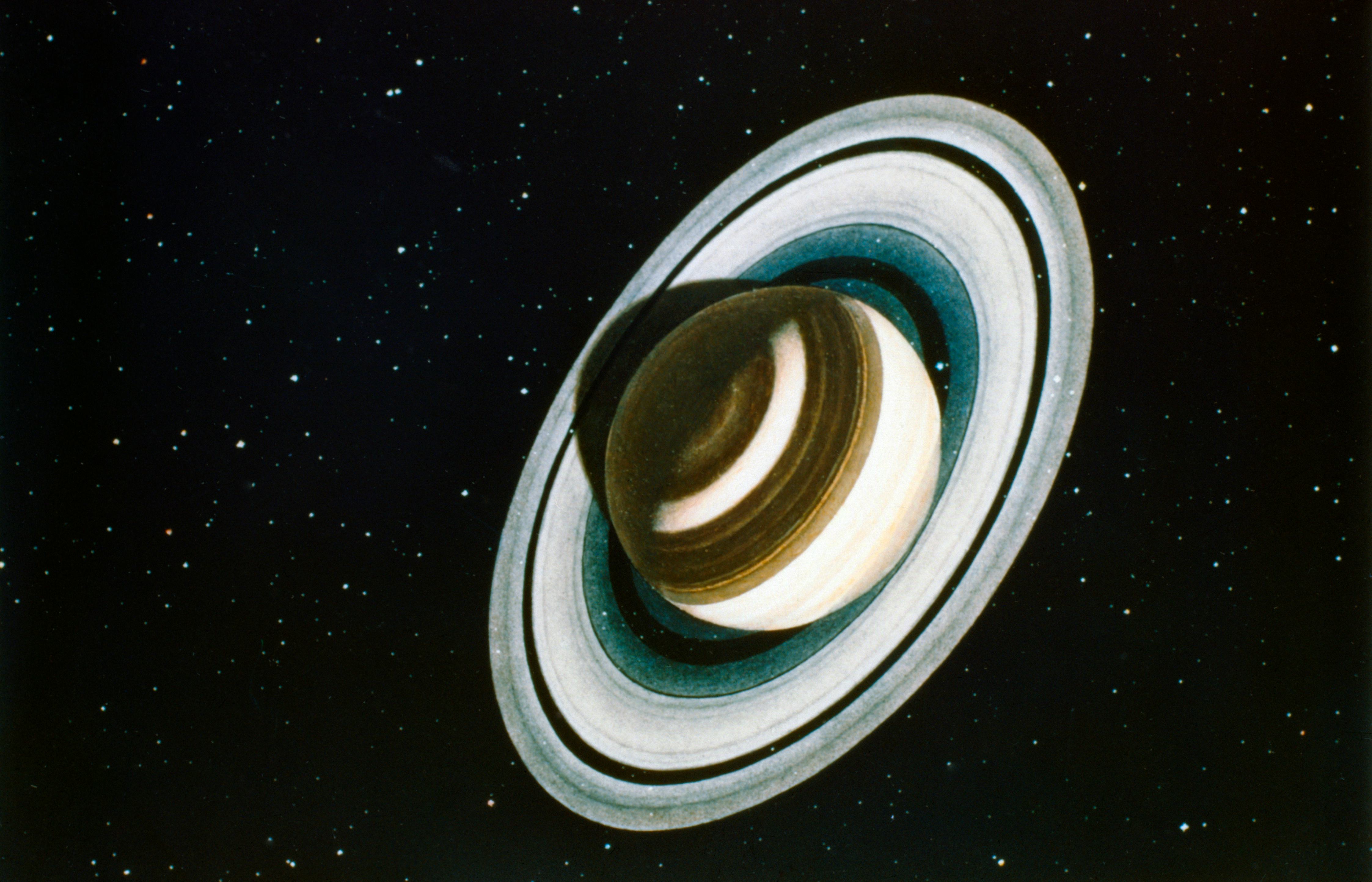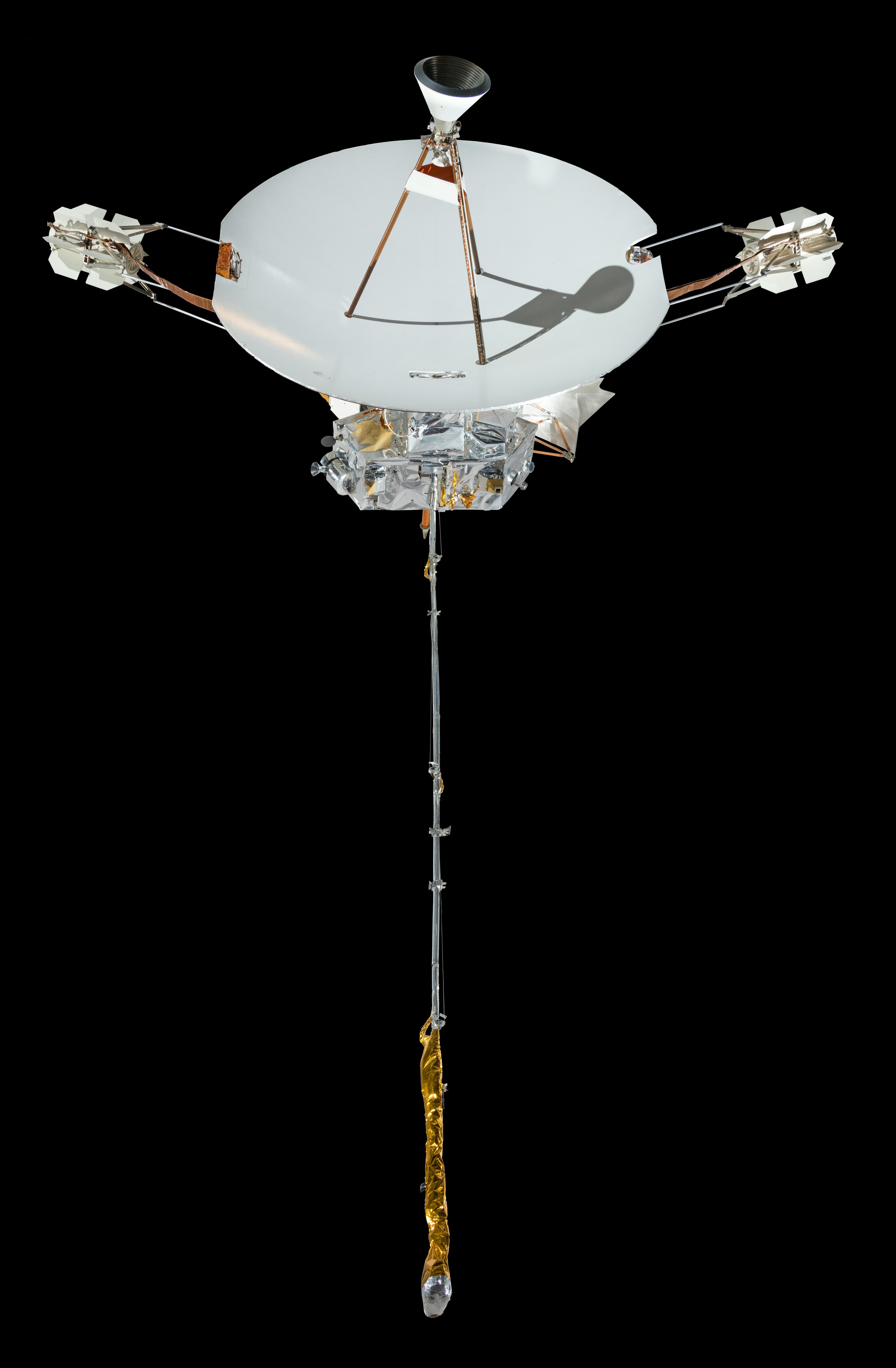
Before the early 1970s, NASA’s planetary science missions stuck close to the metaphorical coastline, sending robotic spacecraft to the Moon, Mars, Venus, and Mercury. It would be the twin missions, Pioneer 10 and 11, that were the space agency’s first voyage to set sail to the outer Solar System, exploring deep space beyond the orbit of Mars.
While Pioneer 10 provided the first close-up images of Jupiter, it was Pioneer 11, launched 50 years ago on April 6, 1973, that provided the first-ever close-up images of Saturn and the planet’s ring systems. And while Pioneer 10 got to Jupiter first, Pioneer 11 passed closer to Jupiter than its twin Pioneer 10 had, and provided the first images of the Jovian polar regions.
And even though the Pioneer 11 images of Saturn and Jupiter were later overshadowed by the Voyager missions of the late 1970s and 1980s, Pioneer 11 helped make the Voyager mission possible. The Pioneer 11 tested out spacecraft technologies and configurations that would later power those missions and make them faster and more durable.
The Pioneer 11 mission “was sort of our first shot out into the outer Solar System with the intention of collecting great images and data from the planets that it was sent to encounter, but then also to figure out what was needed for future spacecraft,” Matthew Shindell, curator of Planetary Science and Exploration at the Smithsonian National Air and Space Museum, tells Inverse. “It sort of paved the way if you will, for the Voyager missions that followed.”
And like Voyagers 1 and 2, Pioneer 11 is one of just five human-made spacecraft currently headed out of the Solar System, and into the reaches of interstellar space — our robotic envoys to a far future we will never know.

Planning for the unknown
The Pioneer missions were planned in the 1960s, an era of much greater uncertainty in space exploration than today, particularly when it came to launches. Almost everything was being done for the first time, according to Shindell.
“NASA was still operating with this model that you always pretty much always built two of everything that you plan to send because you never knew if your first spacecraft was going to blow up on the launch pad,” he says. Mariner 9, for instance, became the sole mission to Mars when it launched in November of 1971, after its twin, Mariner 8, spun out of control shortly after launch in May of that year.
The upside to doubling the spacecraft for a mission was that when everything did work out, as it did with Pioneers 10 and 11, the second spacecraft can advance the mission beyond its original scope, which is how Pioneer 11 wound up making the first visit to Saturn and its massive rings.
In many ways, Pioneer 11 was a lot like other NASA spacecraft exploring the inner Solar System — including having a similar architecture to the Mariner fleet. Its central bus that contained the scientific instruments was hexagonal and just 14 inches deep and 30 inches long, but adding in the power and communications devices brought the total length up to 9.5 feet. It weighed 570 pounds.
But a conspicuously large part of the spacecraft was the 9-foot-diameter radio antenna, far larger than any on NASA spacecraft, but a necessity for communicating across the vast distance of the outer Solar System.
Another important difference from earlier spacecraft was Pioneer’s power source. Given the dim sunlight available out there and the low efficiency of solar panel technology of the time, Shindell says, the two craft were among the first spacecraft to be powered by Radioisotope Thermoelectric Generators (RTGs), which use the heat generated by the radioactive decay of plutonium to produce electric power.
“This mission kind of established what became the common wisdom going forward with outer Solar System missions, which was that RTGs were necessary for these missions,” Shindell says. Take the New Horizons that launched in 2006 and flew by the dwarf planet Pluto in 2015, he says, “New Horizons kind of looks pretty similar to Pioneer in some ways. It's got the large dish antenna, and it's got the RTG.”

A Pioneering Path
After a successful launch on April 6, 1973, Pioneer 11 passed through the main asteroid belt between Mars and Jupiter in April 1974. It reached Jupiter for its flyby on December 2, passing 26,700 miles above Jupiter’s clouds, taking the first images of the gas giant’s poles took pictures of the Great Red Spot, the massive cyclone that has been raging on Jupiter for centuries.
Pioneer 11 used Jupiter’s gravity to slingshot above the plane of the ecliptic, that is, the flat imaginary plane in which the planets orbit the sun, accelerating to 110,00 miles per hour for its long trip to Saturn. It would take five years to cover the 1.5 billion miles to the ringed planet.
During its September 1, 1979 flyby, Pioneer took the first up-close images of Saturn’s rings, discovered a new ring not seen by ground-based astronomers, and revealed some of the details about Saturn’s moon Titan.
“People were very interested in Titan at the time and it was Pioneer 11 that determined that Titan was way too cold to actually support life,” Shindell says, “a pretty inhospitable, icy place.”
Unlike the Voyager spacecraft that were able to take advantage of planetary alignments to make a grand tour of the outer Solar System, Pioneer 11’s planet observing days were over after passing Saturn, though it continued to operate for years, sending back valuable data about the space environment beyond Saturn.
“It continued sending back data until 1995 when the spacecraft ultimately died and NASA had no more communication with it,” Shindell says. But over the years, “it was still returning valuable information about the environment in the outer Solar System and what the spacecraft was encountering in terms of radiation and solar, wind and cosmic rays,” he adds.

Pioneer Legacy
Today, the public legacy of Pioneer is somewhat forgotten, overshadowed by more colorful (and plentiful) images of the outer planets taken by the subsequent Voyagers 1 and 2.
The Voyager missions even overtook Pioneers 10 and 11 on their paths out of the Solar System. Launched later, but flying faster, both Voyagers have already left the Solar System, while the Pioneers may take years more to reach interstellar space.
But Pioneer 11 is still worth celebrating, if for no other reason than it was, truly, a pioneering mission.
“You're thinking about a time in space exploration where there was so much stuff that had yet to be done. None of the outer planets had been visited, and no technology had yet passed beyond the asteroid belt,” Shindell says. “There were all these unknowns, and Pioneer 10 and 11 are the last spacecraft we ever launched in that state of not knowing.”
The knowledge gleaned from the Pioneer spacecraft, particularly Pioneer 11, helped engineers design the Voyagers and later missions to the outer solar system. Pioneer 11’s close pass of Jupiter taught scientists and engineers, for instance, that they needed to better shield a spacecraft’s electronics from the fierce radiation trapped in Jupiter’s massive magnetic field.
“A lot of the same scientists who worked on Pioneer also went on to work on Voyager,” Shindell notes, ”the most famous example, of course, is Carl Sagan, who worked on both missions and so applied the same kinds of questions and solutions to problems that he had to both missions.”
And it would be the students of some of the scientists who worked on Pioneer and Voyager who would design and fly the New Horizons mission, which following its successful flyby of Pluto is now the fifth and latest human-made object to chart a course out of the solar system and into interstellar space.
And speaking of interstellar space and Carl Sagan, Pioneer 11’s other legacy is serving as an emissary of humanity to any intelligent life in the universe that might come across it. The Voyager spacecraft carried sounds of Earth on golden records, a “sort of interstellar mixtape that we sent out into the Solar System and beyond in case anyone ever finds it,” Shindell says. But it was the Pioneer spacecraft that first carried a message from Earth in the form of a golden plaque illustrating our Solar System and featuring nude drawings of a human male and female.
“Pioneer and that plaque are really an articulation of the idea that we're probably all alone in the universe, or in our own galaxy,” Shindell says. Maybe there is some other technological civilization in the universe asking if it is alone, “and if they found this, then they would know. The same way that if we found something like that, suddenly, our lives would be changed forever.”







